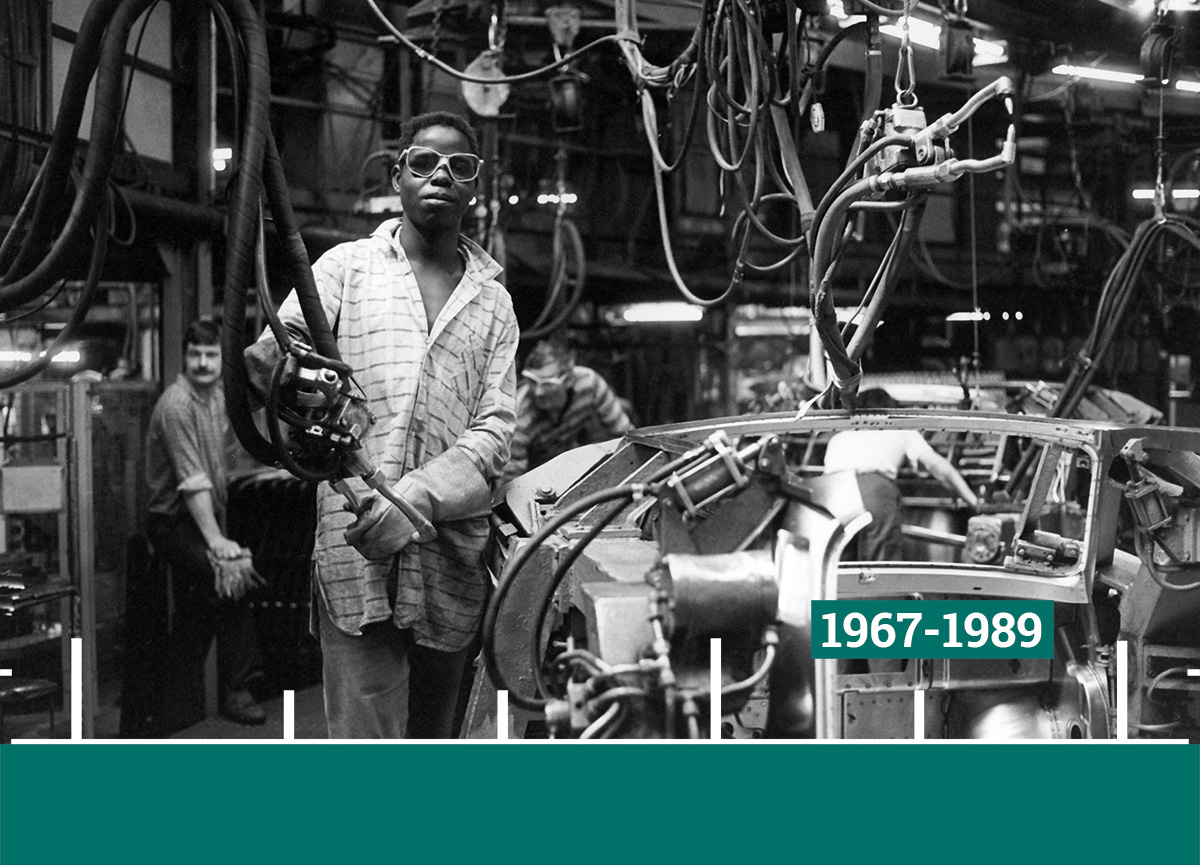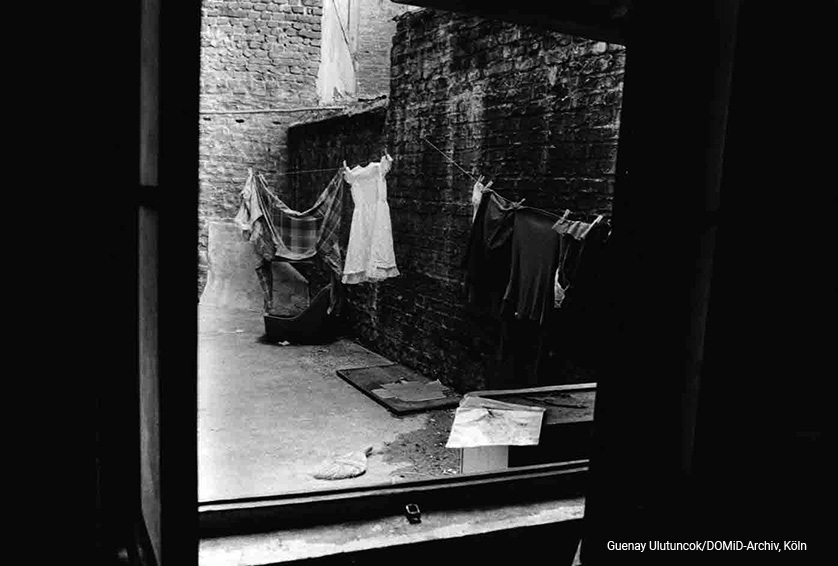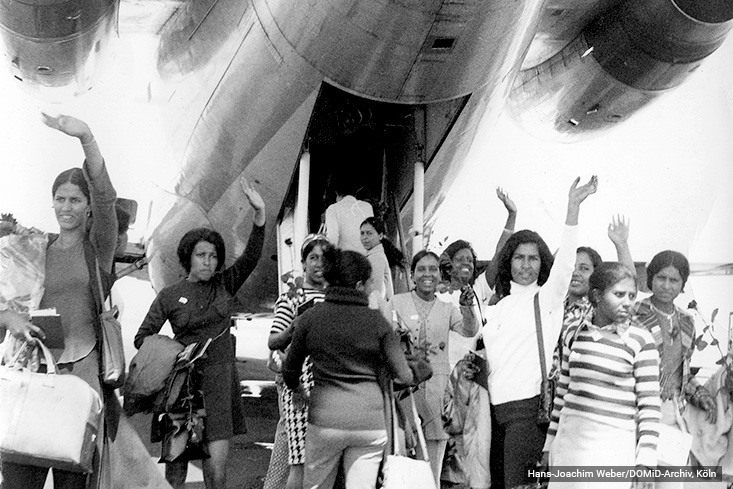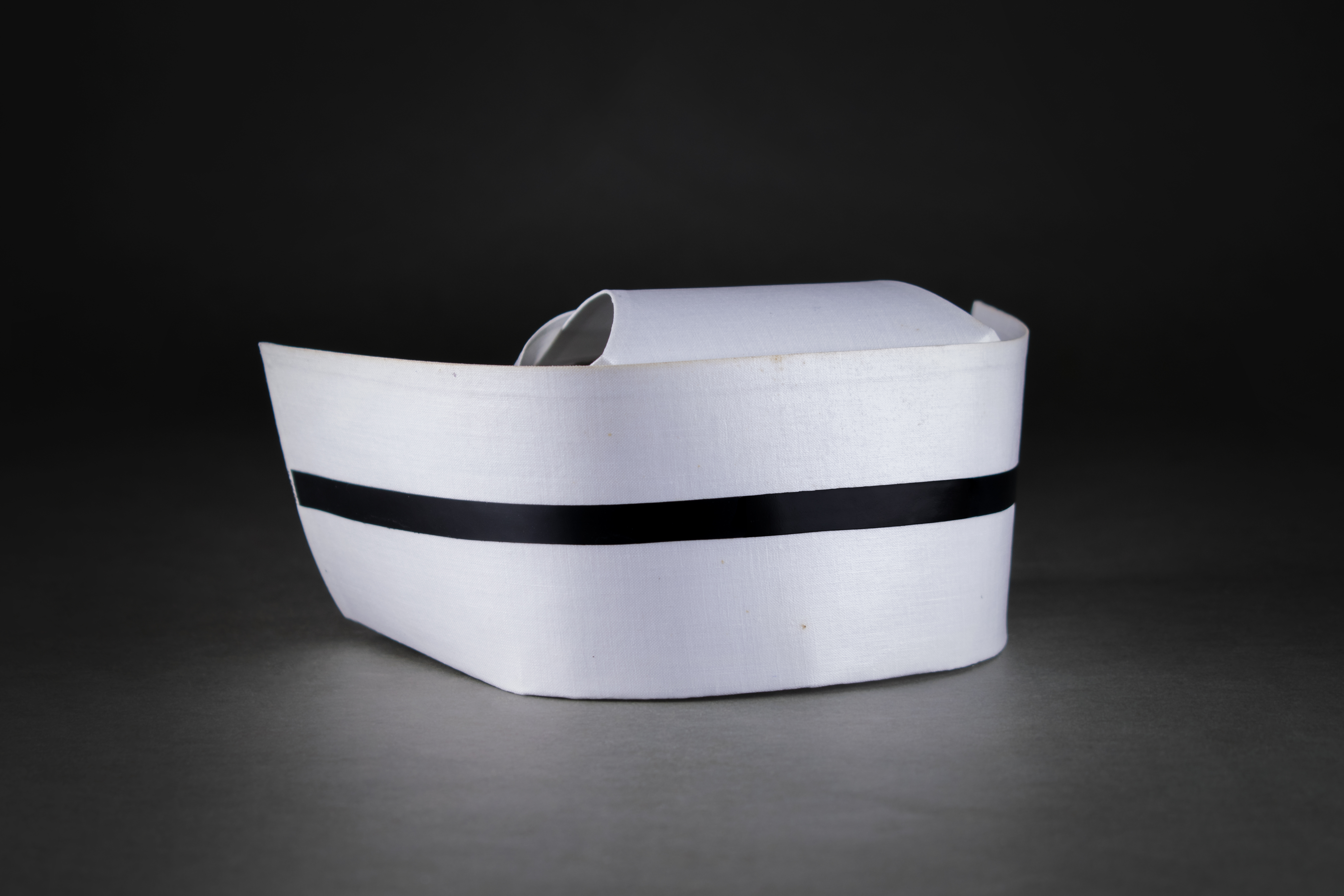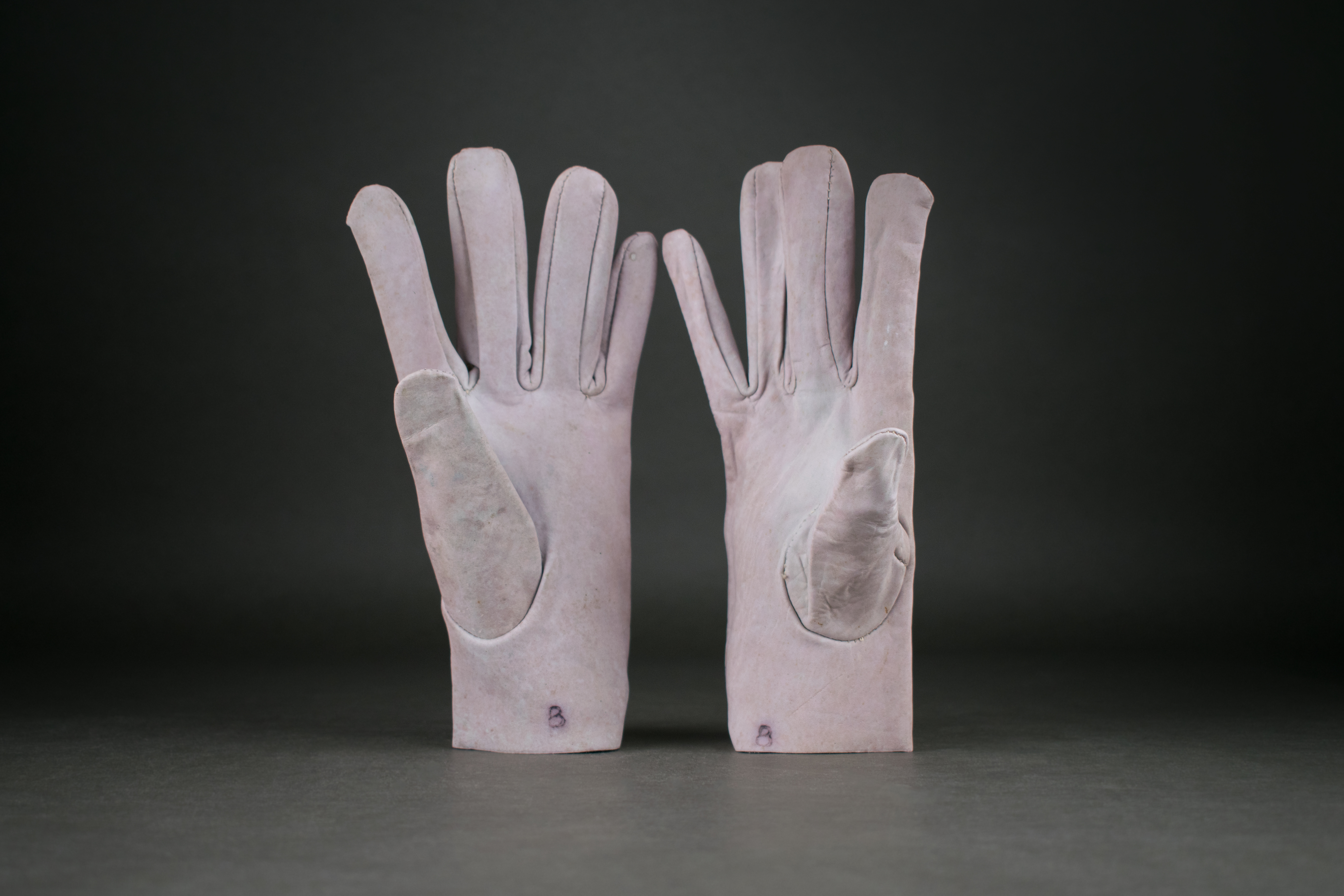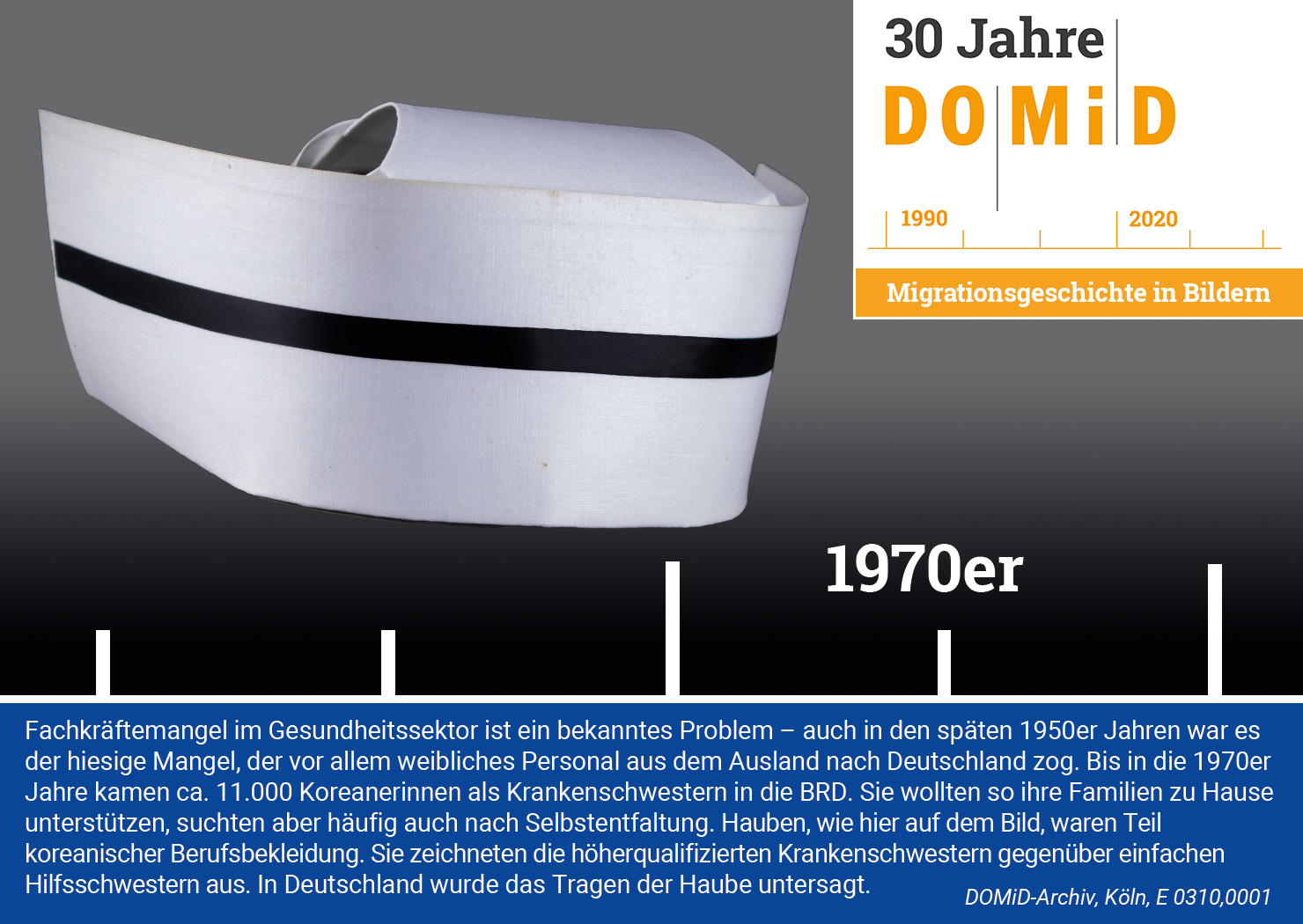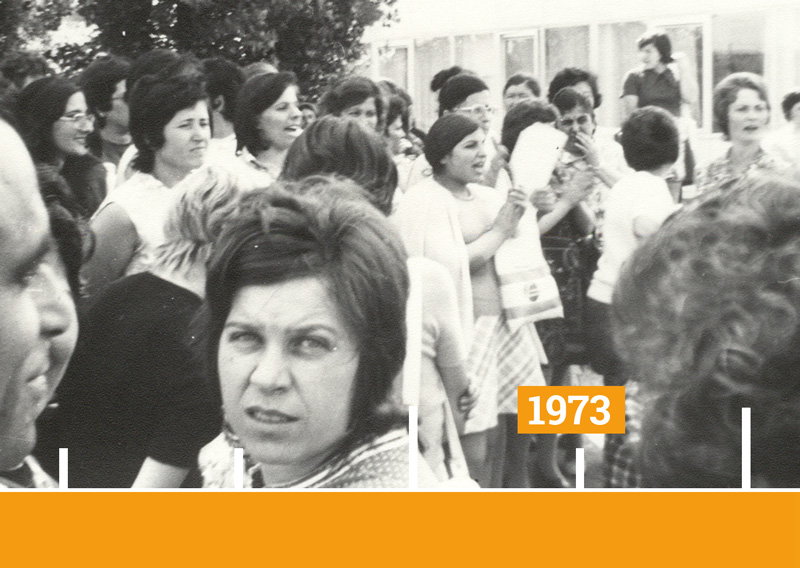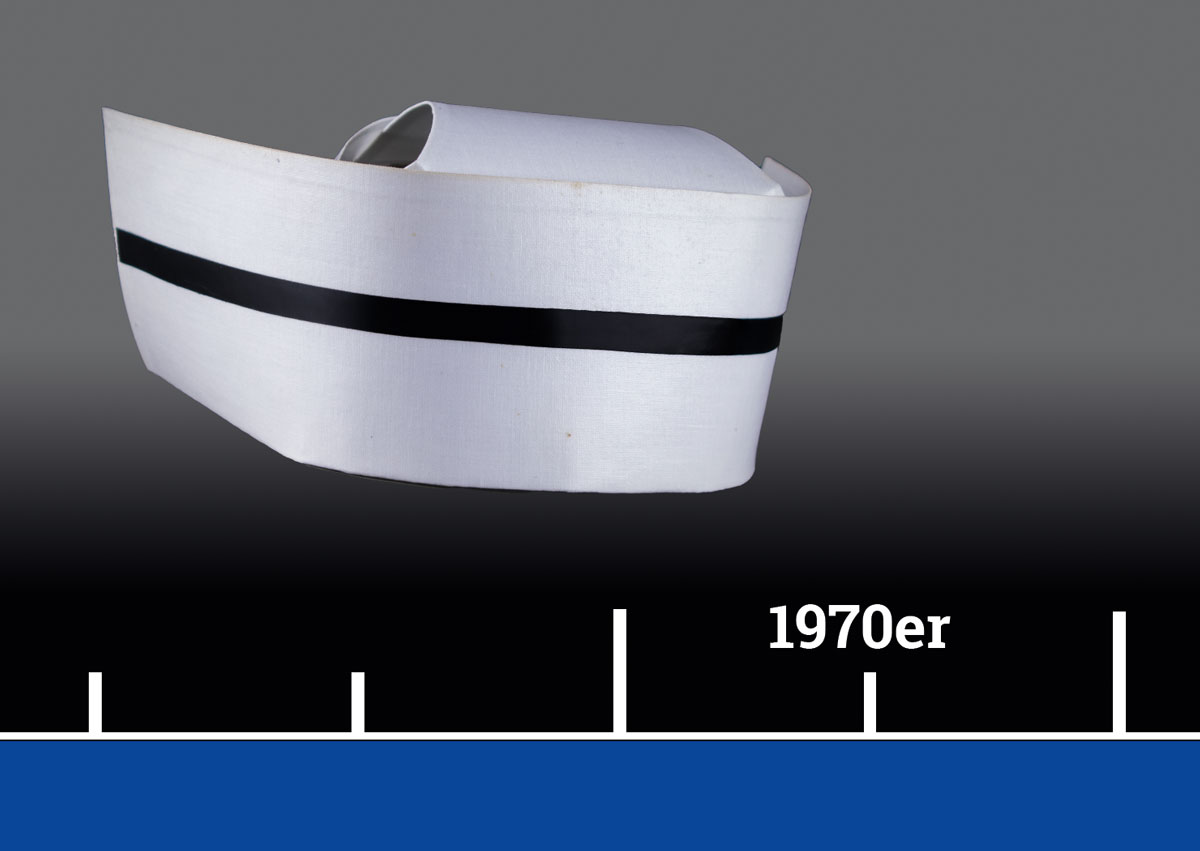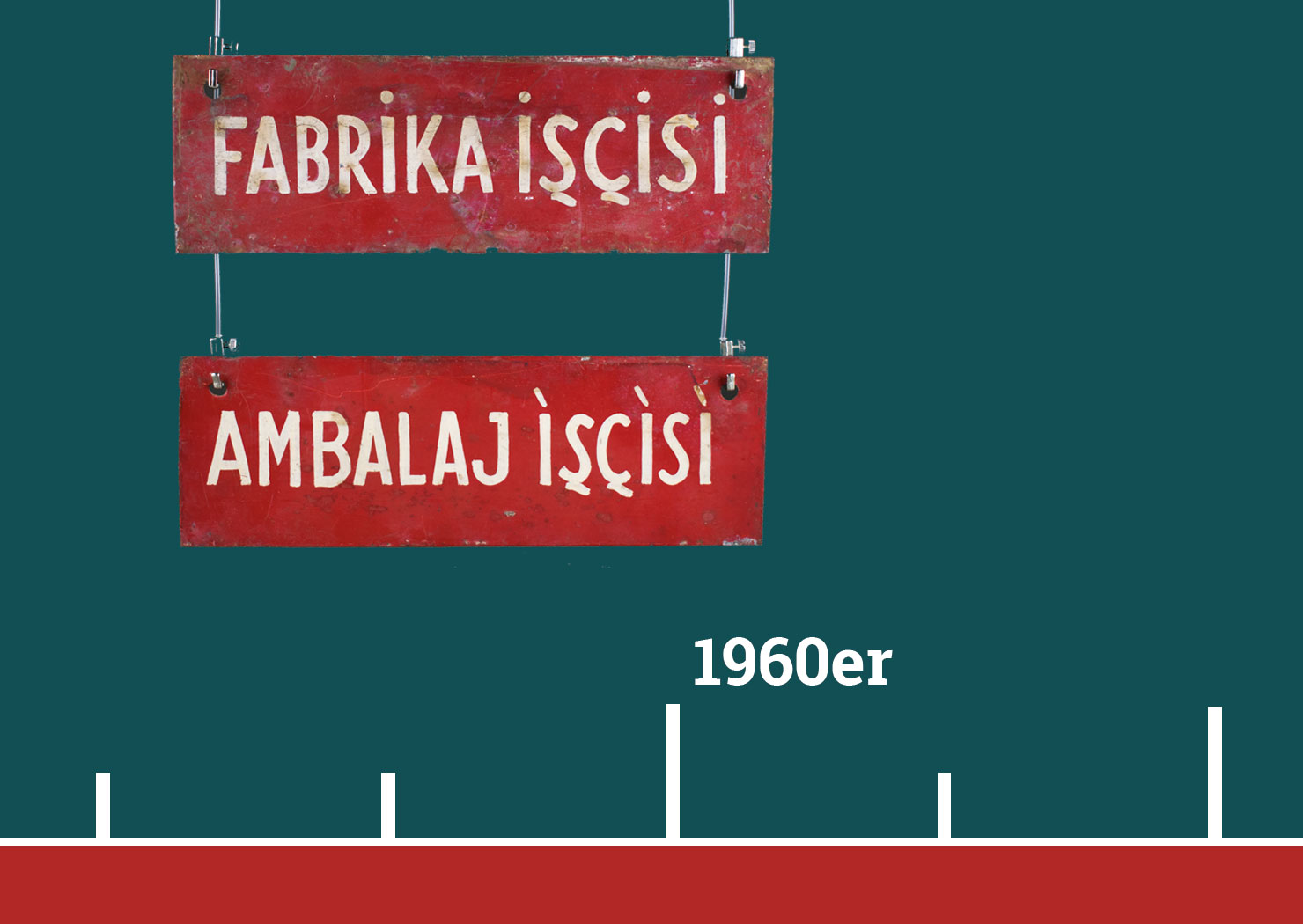Korean nurses : between admiration, overqualification and exlusion
Between the late 1950s and the late 1970s, 11.000 Korean nurses came to the Federal Republic of Germany, along with women from the Philippines and India recruited for the same sector. Contemporary media reported very favorably about the Korean healthworkers, but their portrayal was also characterized by racist stereotypes and exoticism. In their daily work life, Korean women also had to face prejudices and discrimination.
Unlike in Korea, there was no differenciation between auxiliary nurses and the higher-educated nurses in Germany. The Korean nurses thus stood out as the better qualified colleagues and were especially popular with patients and doctors. However, the Korean nurses were now confronted with tasks that had never been part of their work in their home country, like cleaning patients, which caused frustration. The higher qualification of Korean nurses also sparked jealousy and competitiveness among their German colleagues – which often led to the exclusion of the Korean nurses on the job.
Almost 30% of all Korean women who came to Germany as nurses stayed here. Of the remaining 70%, 30% went to North America to seek better job opportunities. The rest went back to South Korea. Some of the returnees co-founded and subsequently settled in a so-called „German Village“ on the island of Namhaedo.
